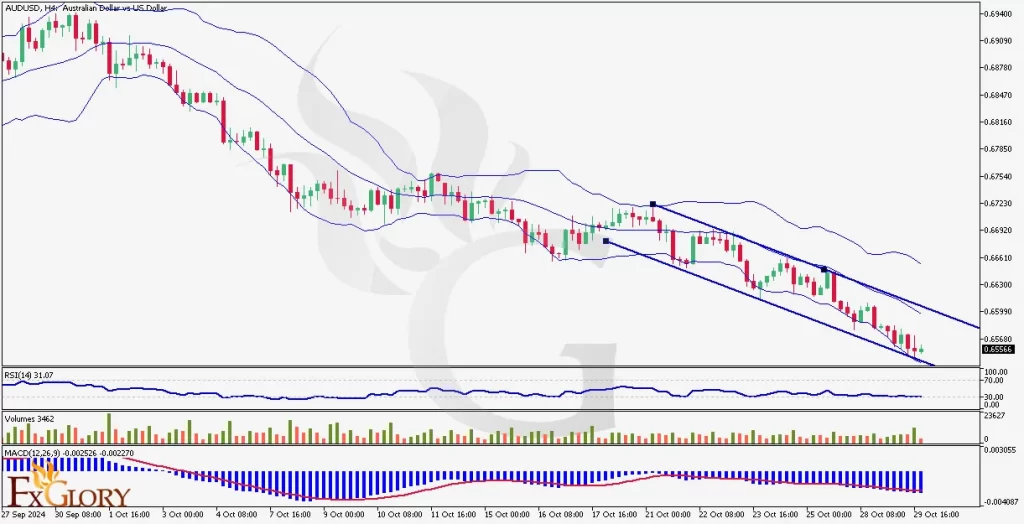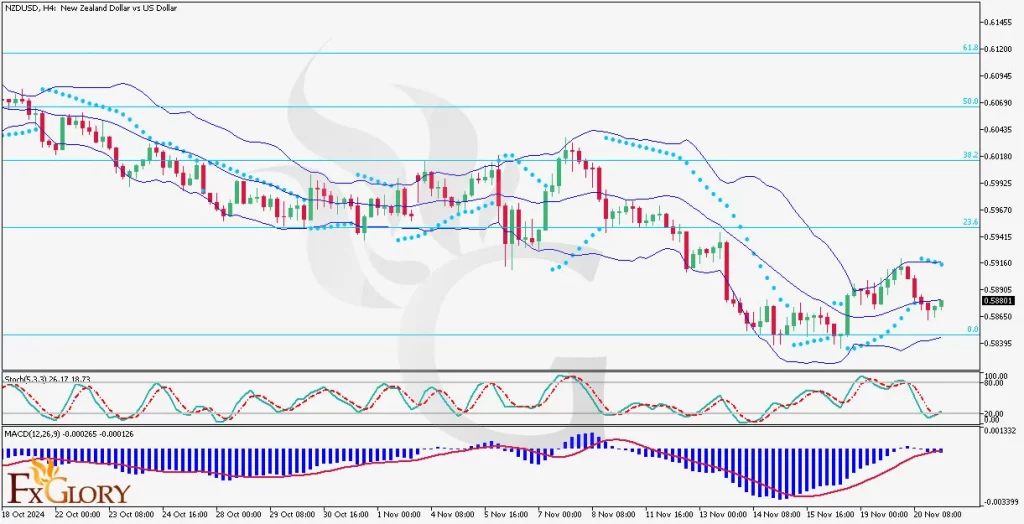AUDUSD Daily Technical and Fundamental Analysis for 10.30.2024
Time Zone: GMT +3
Time Frame: 4 Hours (H4)
Fundamental Analysis:
The AUDUSD pair is currently influenced by mixed economic data from both Australia and the United States. Recent Australian Consumer Price Index (CPI) data revealed lower-than-expected inflation, with quarterly CPI coming in at 0.3% compared to the previous 1.0%, and the yearly CPI at 2.3% versus the prior 2.7%. This signals a deceleration in inflation, which may reduce the likelihood of further rate hikes from the Reserve Bank of Australia (RBA). The steady Trimmed Mean CPI at 0.8% suggests that core inflation is holding, but the overall decrease in inflationary pressure may drive the RBA to take a more dovish stance, weakening the Australian Dollar.
In contrast, the US economic data portrays resilience. The Advance GDP for the quarter met expectations at 3.0%, indicating steady growth, while the Advance GDP Price Index came in lower at 1.9% from the previous 2.5%, showing reduced inflationary pressure on growth. However, the ADP Non-Farm Employment Change was lower than anticipated at 110K, down from the forecasted 143K, signaling potential softness in the labor market. Still, the overall strength in GDP growth supports the Federal Reserveís current monetary stance, potentially strengthening the US Dollar further.
Price Action:
In the H4 timeframe, AUDUSD is trending downwards within a well-defined descending channel, marked by consistent lower highs and lower lows. The pair is currently trading near key support levels around 0.65500, showing no definitive signs of reversal yet. Recent price action suggests continued bearish momentum, though the proximity to the lower Bollinger Band indicates potential for short-term oversold conditions. If the price breaks below the 0.65500 level, it could open the path towards the next support levels.
Key Technical Indicators:
MACD: The MACD indicates strong bearish momentum, with the MACD line positioned below the signal line and the histogram extending below zero. This configuration reflects a solid downward trend, although any divergence or slowing of the histogram may suggest a possible easing of bearish momentum.
RSI: The Relative Strength Index (RSI) is around 30, which is close to oversold territory. This level may attract some buying interest, suggesting a potential short-term rebound. However, the downtrend remains dominant, and a sustained move above 30 on the RSI would be needed to signal a possible reversal.
Volume: Volume remains relatively steady, without any significant spikes. This steady volume trend supports the continuation of the current trend but lacks strong buying interest, further confirming bearish sentiment.
Support and Resistance Levels:
[B]Support: [B] Immediate support at 0.65500, where the price is currently consolidating. Further support levels are seen at 0.65350 and 0.65200, which could provide stronger buying interest if the price continues to decline.
Resistance: Resistance is located at 0.66590, a recent level where price gains were capped. Additional resistance levels are at 0.66990 and 0.67190, where stronger selling pressure may re-emerge if the price rebounds.
Conclusion and Consideration:
AUDUSD is in a strong bearish trend on the H4 timeframe, trading near critical support levels. The MACD and RSI both signal bearish sentiment, though the RSI nearing oversold territory suggests the potential for a short-term pullback. Traders should closely monitor Federal Reserve commentary and any RBA updates, as hawkish US Fed statements could strengthen the USD further, intensifying the downward pressure on AUDUSD. Conversely, any dovish Fed signals or supportive Australian economic data may provide temporary relief for the AUD. Key support and resistance levels should be watched for any breakout, which could indicate a continuation or reversal of the current trend.
Disclaimer: The analysis provided for AUDUSD is for informational purposes only and does not constitute investment advice. Traders are encouraged to perform their own analysis and research before making any trading decisions on AUDUSD. Market conditions can change quickly, so staying informed with the latest data is essential.
FXGlory
10.30.2024


 LinkBack URL
LinkBack URL About LinkBacks
About LinkBacks








 Reply With Quote
Reply With Quote








Bookmarks